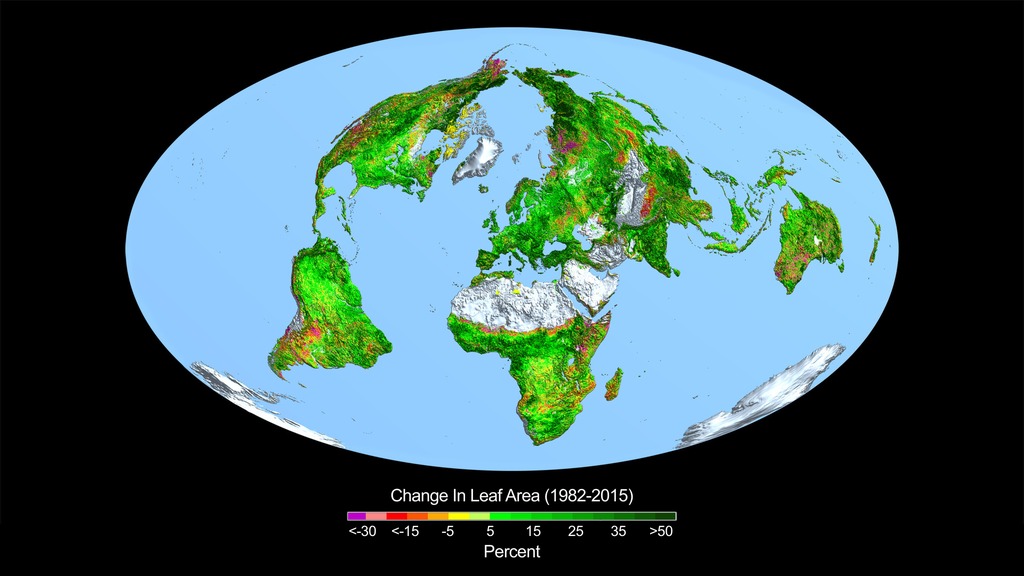Earth Is Getting Greener

Rising levels of carbon dioxide in the atmosphere are giving plants a boost.
Scientists have found that a quarter to half of Earth’s vegetated lands has shown significant greening over the last 35 years largely due to rising levels of atmospheric carbon dioxide. The findings are based on computer models and data collected by NASA and NOAA satellites. The greening represents an increase in leaves on plants and trees equivalent in area to two times the continental United States. Green leaves use sunlight, water and carbon dioxide to grow. While rising carbon dioxide concentrations in the air can be beneficial for plants, it is also the chief culprit of climate change. The gas, which traps heat in Earth’s atmosphere, has been increasing since the industrial age and is continuing to reach concentrations not seen in at least 500,000 years. What's more, researchers say the favorable impacts of carbon dioxide on plants may be limited. Studies have shown that plants adjust to increasing concentrations of carbon dioxide and the powerful boost given to vegetation growth decreases over time. Watch the video to learn more.
Explore how increasing carbon dioxide concentrations are spurring plant growth in different regions of the world in this video.

About 85 percent of Earth’s ice-free lands is covered by vegetation.

This map shows the change in the amount of leaf cover over the planet’s vegetated regions from 1982 to 2015.

Scientists used data collected by NASA and NOAA satellites to help determine how Earth's vegetation has changed over time.
For More Information
See NASA.gov
Credits
Please give credit for this item to:
NASA's Goddard Space Flight Center
Map courtesy of Boston University/R. Myneni
-
Writer
- Samson K. Reiny (Wyle Information Systems)
-
Scientist
- Ranga Myneni (Boston University)
-
Producers
- Kayvon Sharghi (USRA)
- Sophia Roberts (USRA)
Release date
This page was originally published on Tuesday, April 26, 2016.
This page was last updated on Wednesday, May 3, 2023 at 1:48 PM EDT.
